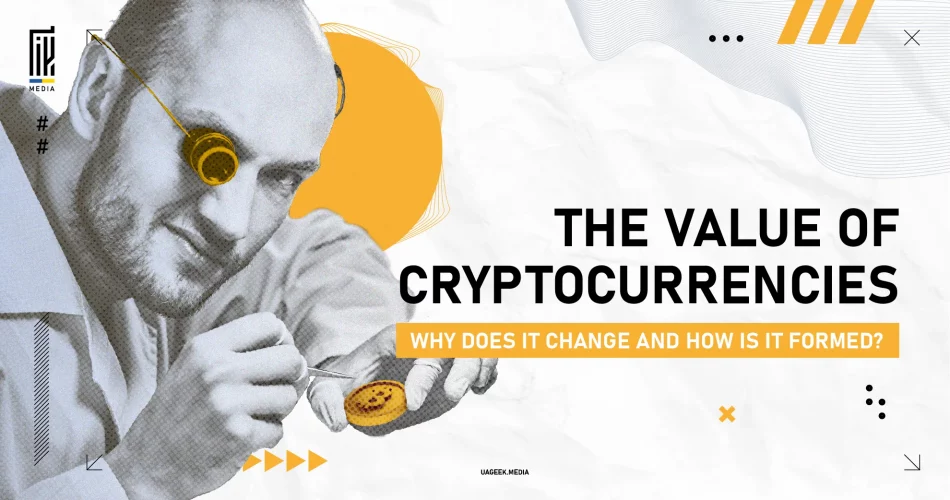Hello, community! If you have been working with cryptocurrency for a while, specifically as an asset, then you surely know how much this market depends on speculation. A vivid example is Dogecoin, an ordinary meme coin that Elon Musk skyrocketed in price with just a single tweet.
However, hype and speculation are not the only factors influencing the value of a particular coin. There are also more objective factors, which we will discuss in today’s review.
Before we begin, let us remind you that we’ve previously shared why it’s worth considering the possibility of diversifying assets with cryptocurrency. Highly recommended for reading!
Economic Factors
The most important are the economic factors, which are nearly the same for any asset and investment sector.
For instance, supply and demand. The price of a token directly depends on how many coins are available in the market and how many people are willing to buy them. If you list a coin for one dollar, another investor may offer their assets at a slightly higher price, the next one higher still, and so on. Accordingly, if there is demand and coins are actively being purchased, nobody will lower the price—quite the opposite, the price will rise until the process slows down or reaches a resistance level, to be more precise.
Can you create your own coin with a supply of trillions? Obviously, such a coin will never be worth $1, because there wouldn’t be enough money globally to be invested in your token to sustain and stabilize the price.
Therefore, another critical economic criterion is capitalization. The higher the capitalization of a coin, the more trust it garners. This is because it indicates that a significant amount of money is invested in that asset, which fosters greater trust, especially among those who don’t fully understand what Ethereum or Ripple are.
Of course, there are many aspects to consider. It’s worth reading a few economic books if you have the enthusiasm and time. But for now, we are here to provide a general understanding, which is also valuable.
Global Economy
The global economic situation directly affects cryptocurrency. It reflects societal moods and, most importantly, how much disposable income people have.
At the time of writing this article, most of the crypto community is awaiting the Federal Reserve’s decision on a new credit rate in the United States. If predictions come true and the rate is lowered, we might witness another surge in token prices.
The reason is as follows:
- Lowering credit interest rates indicates the economic condition of a country, particularly its inflation levels. If a country is in good shape, they reduce credit costs to stimulate further budget inflow;
- Subsequently, many investors, entrepreneurs, and even ordinary people begin to use cheap credit and spend money on new assets. The crypto market doesn’t stay idle during such times;
- A strong economic situation globally or in a powerhouse like the U.S. boosts investor sentiment, encouraging them to expand their portfolios, which drives prices up.
In short, the more money people have, the higher the value of cryptocurrencies.
Technologies
The security of using a particular cryptocurrency also affects its value, including the blockchain it uses for transactions.
Technology also includes the difficulty of mining a coin. For instance, the cost of mining one Bitcoin can exceed $40,000 (electricity, equipment, etc.). Thus, nobody would sell it at a loss unless the market collapses entirely.
On the other hand, if your coin can be mined by your neighbor’s grandma, it will inherently lack value.
Whale Movements
Another crucial factor, sometimes comparable to speculation, is whale movements.
In the crypto world, whales are individuals or companies holding a significant amount of a particular asset. For example, in Bitcoin, BlackRock is one of the main whales, holding over 300,000 BTC out of nearly 20 million mined.
Smaller investors closely monitor whales and replicate their movements. If a whale sells its assets, it may signal a future price drop, prompting cautious investors to consider selling their holdings before a significant dip.
For instance, imagine seeing such a signal. You may question whether to sell your two TON Coins before they lose ten cents in value. While a straightforward example, it illustrates the point well.
Today, tracking whale movements is quite accessible. Dedicated channels monitor specific wallets and addresses, allowing investors to see when whales buy other coins, often triggering price increases.
News and Speculation
The cryptocurrency market is young and volatile. It’s no surprise that bloodbaths (where most coin prices plummet) occur frequently. A single missile strike from Israel on Palestine can trigger price drops as people anticipate conflict in the region.
Conversely, good news drives price growth.
For example, Pavel Durov’s recent arrest in France caused the main Telegram cryptocurrency, TON Coin, to drop significantly. The trend reversed once news of his release and subsequent collaboration with French authorities reassured investors, causing TON blockchain coin prices to rise again.
Conclusion
Many factors influence the value of cryptocurrencies. While we cannot control them unless we become a whale ourselves, understanding how the market works enables more cautious and secure investments.
Do you hold cryptocurrencies? Share in our Telegram community which coins you trust the most!
Best regards, Your Geek!
Why Does Cryptocurrency Value Change and How It Is Formed FAQs
Cryptocurrency price formation is a complex process considering multiple factors: supply and demand, investor sentiment, the global economic situation, etc.
The main reason for cryptocurrency price increases is higher demand, driven by parameters such as the socio-economic conditions in society.


Comments